
|
|
 Related stories
Related storiesOther Stories By JorisPPattyn
 Styling Nonsense
Styling NonsenseJan 4, 2010
 A Perfect Tasting
A Perfect TastingJul 9, 2009
 So You’ve Got a Cellar...Now What?
So You’ve Got a Cellar...Now What?Apr 30, 2009
 A Letter from Belgium
A Letter from BelgiumSep 30, 2006
 A Letter From Belgium - July 13, 2006
A Letter From Belgium - July 13, 2006Jul 13, 2006
 The Long Road to M-Dorf
The Long Road to M-DorfOct 6, 2005
 So You’ve Got a Cellar...Now What?
So You’ve Got a Cellar...Now What?Apr 28, 2005
 A Letter From Belgium
A Letter From BelgiumJan 13, 2005
 A Letter From Belgium
A Letter From BelgiumJan 6, 2005

Into the Sanctum Sanctorum of Beer
A letter from Belgium
Features
March 8, 2007
Written by JorisPPattyn
Wilrijk, BELGIUM -
What is the Holy Grail for the beerlover?
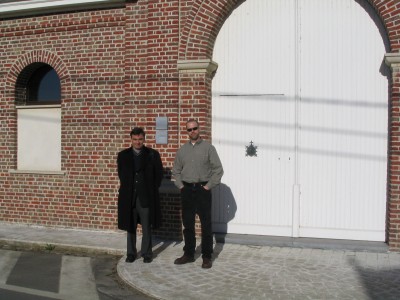
waiting for the “open sesame”
Maybe it depends on the taster - you might be waiting for that bottle of Raspberry Eisbock. Or you might have always wanted that Dark Lord Imperial Stout, and were afraid to ask?
It might be any of that, or something else, but I think that, when we approach beer with a quasi-religious feeling, the Trappists come to mind first, and above anything else, the elusive beers of the Westvleteren monastery, tucked away in a corner of Belgium near the French border.
Now, when you talk about Westvleteren and about Ratebeer, there could creep a little uneasy feeling into the conversation. Wasn’t it a blown-up “Ratebeer Best” that caused a kind of rush on the Trappist ales from the smallest of abbeybreweries? 4750 hl annually, at the utmost, a voluntary limitation by the brothers.
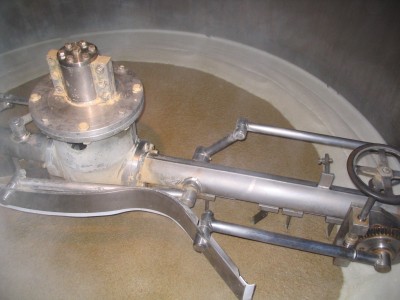
this is an active brewery
Now this limitation has led to some unending frustration. On Ratebeer Forums, as on other, mainly New World websites, there has been a reflex-like reaction “Why can’t they brew more beer? It would help them – if they want their gains only for upholding the good works – more beers means more money for those, no?”
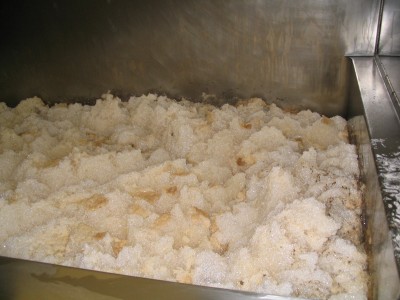
a very active brew
Brother Joris, head of the brewery at Westvleteren, is used to weighing his words, and now the pause is even longer. But then the answer is consequently clear. “We cannot and we want not – at least not these years”. There’s three people – monks, that is - Westvleteren uses little or no laymen – full time involved with the brewery, plus two of the younger brothers for the brewery gate sales. When bottling is at hand, as many as ten brothers have a full shift. In 2000, the brewery upped its turnover so as to use the full capacity of the existing fermentation vessels and lagering cellar (involving 75 brewing days a year, at max). This was agreed to, even when it was pretty clear that as from that moment, the brewery had to sell as quickly as possible, to empty the necessary vessels.
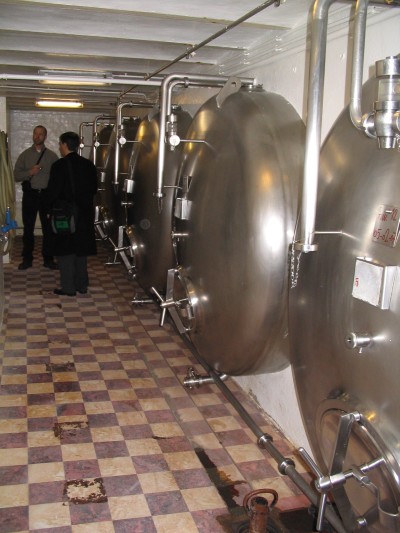
where the Trappist ripens
As quickly as possible, Trappist style, of course, some of the beer stays way over two months in the lagering tanks. Brother Joris affirms that the quality can only benefit from the longer lagering. Now, if they had to up production even more, not only turnover needed to be even quicker, but more people ought to get involved. New lagering and fermentation vessels ought to be installed, which would make new investments necessary, but would mean that people from outside ought to be brought in for the extra work. Which would up the production costs even more. A spiral that is easy to get on, but hard to get off again, and it is something the monks are not prepared to enter.
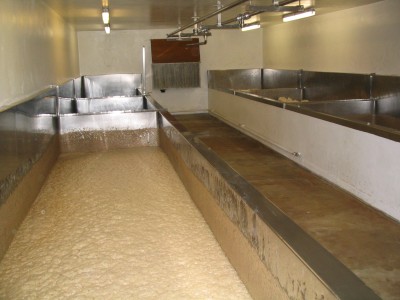
more beer in the making
Not that there are no investments done in this microbrewery. The brewing room, installed 1989 by Ziemann, is more than up-to-date. But the bottling machine is not, and the powers that be have decided that renewal, if only partial, is inevitable. But that is a controlled investment plan, not a head-over-heels following of the hype. “Hype” - the word is out, and it is Brother Joris himself who has uttered it. Nothing could have prepared the monks for what happened 1½ year ago.
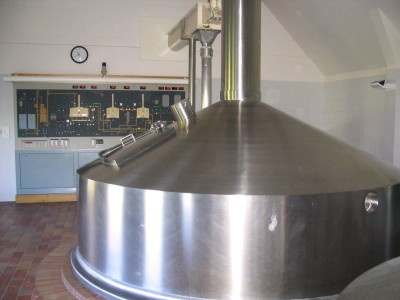
how to control the elusive Trappist ale
A journalist from a Belgian national newspaper picked up a saying by the Flemish “minister-president” who claims to drink a Westvleteren 12 before going to bed daily. The same journalist picks up a small article in a New York newspaper, advertising Ratebeer Best – Westvleteren 12 again. And thus, a legend is born. To make matters worse, this was just before summer, when the brewerypeople take a recess. For months, no Westvleteren was to be had – with the exception of the servicing at De Vrede, of course. Which was subsequently assaulted by beer “tourists”. At De Vrede, they can sell the beer, but they are fully aware about the terms of agreement with the abbey. De Vrede gets priority, but even their share is limited. So, they refused to sell beyond a certain point too.
Thus the peaceful rural area and small country roads, leading to the abbey, changed into traffic jams, more usually associated with city centre rush hour. To the dismay of the local people, police and authorities. And the monks… We all know what this resulted in: the phone reservation system appointing days for the tenacious beerhunters. Did this solve problems?
Brother Joris grins ruefully. The reservation system proved beneficial to some occasional customers, but the habitual customers were less happy. And were the traffic jams disappeared, a new jamming surfaced: on the local phonelines. The locals were, again, less than happy. This was solved by diverting the beerline via a 0700 line towards the Brussels central. OK for the local lines, but now a lot of the callers felt less than happy. Not surprisingly, as the nice voice telling one all lines were taken, meant a conversation to pay for, without any promise of beer. And as it was, this could happen over and over again. No gains for the brewery, but a huge phonebill for the potential customer. So, nowadays, one just gets an “occupied” tone. And a lot of nervewracking try-agains.
In short, nobody is really happy, the brothers least of all. They’ve actually invited the public to suggest improvements. However, we doubt that the stamina of the most reclusive of Trappist beers will ever diminish. Brother Benedict, the brewer, is still tampering with the recipe of the blonde, because he always sees room for upgrading. Whilst we are enjoying a glass of the famous brews (8° and Blonde, the Twelve never being served on the abbey grounds!), in a typical austere visitors’ room, I ask a bit provocatively that it must be gratifying all the same, to know that one’s beer is so well appreciated worldwide.
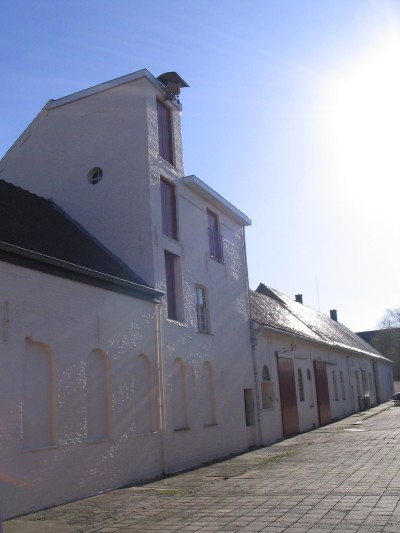
the old, disused brewhouse
Again the sphinxlike grin appears. “We know our beer is good!” and then Brother Joris implicitly admits being far from unworldly. “We noticed recently some Swedish beer is on tops! We were very happy – Westvleteren is in the quiet again, thank God.” Indeed, so they know about Närke Kaggen Stormaktsporter at Westvleteren? They are going to build a party at Örebro. Then again, it’s rather the other way round, if I looked carefully. Anyway, they don’t go into advertising at Westvleteren.
Which doesn’t prevent the fact that, when I ask brother Joris about the famous wooden crates, he admits that some years ago, modern plastic crates were envisaged, but rejected again, as the wooden ones more aptly fitted the general image of the brewery, and also provided work for people at a protected workshop. Some things go down better than others… Brother Joris points at the inkjet, a modern piece of equipment precariously balanced above the much older bottling line. “Everything is there,” he says, about the famous colour-coded caps, “some years ago, a warning concerning the presence of barley malt was imposed, so we threw away some other obsolete mention on the cap, and it’s OK again.” On my question whether Europe might not be obstructive concerning the lack of labels, he grins: “Not yet!”
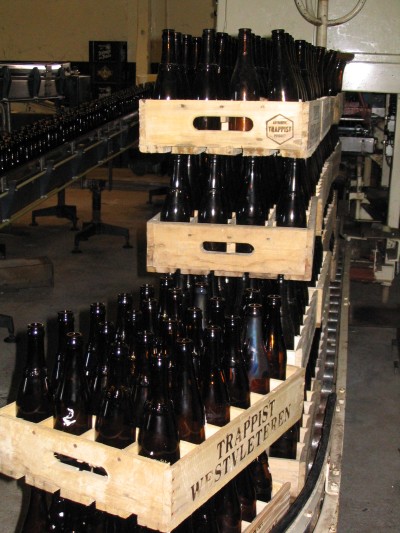
waiting to be filled with nectar
Modern adaptations to a brewery that is, essentially, still very traditional. Nowhere on our path through the brewery did we come across a filtering or centrifuging device. There isn’t any. The yeast (originating at Westmalle) is harvested from open fermenting vessels (brother Joris is adamant that a total openness to the air results in a sturdier, firmer beer) to be used again for the bottling. If invert sugar is used for refermentation, the blonde gets no addition of sugar during the brewing process, and of course no colouring. If fresh hops, hop extracts and pellets are used, all are still originating in the surrounding Poperinge hop region. Malts hail from the Antwerpener Dingemans maltings, of course. Even when we did not visit, we saw in a quiet inner courtyard the old brewhouse: built following the age-hallowed tower principle. “The new brewhouse essentially keeps the old principles honoured,” we hear.
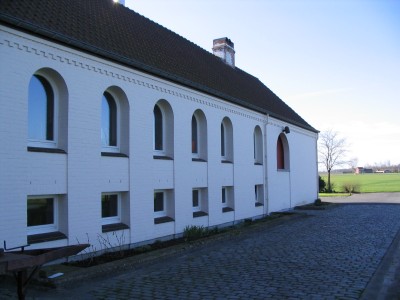
new brewery at the back of the monastery
The monks apply the old traditions, and if the New World – or outside world at large – does not always understand their monastic traditions, they will rather smile upon the misunderstanding. But make no mistake. They do not smile upon the excesses following the hype. They follow eBay too, as well as the even more commercial beerhouses, expediting mixed Westvleteren cases throughout the world – peaking at 700$ a crate! “But can you do anything about it at all?” I ask. “Oh yes,” is the reply “it’s just more paperwork for overworked me. But we HAVE filed complaints on at least two firms, making business out of our beer, breaking knowingly our demand not to resell our bottles.”
It is not American collector/hunters that infuriate them. That I admit having swapped many’s the bottle of Westvleteren for American exotics is shrugged away. It’s people making (unmerited) money upon their labour, what aches. The monks will not remain immobile on this practice. Conclusion? Why pay a lot of money to dubious interceding parties; save up your pennies for a holiday to this part of the world. If you use the locals, let them ring for you, and drive your rental car on your appointed day to the famous white gates. Or enjoy a glass (or two, three) at the roomy De Vrede outlet, and maybe take home a sixpack – for a reasonable sum.
If we (my wedded wife, American BeerAdvocate delegated David Anderson, and yours truly) managed to gain entry to the sanctum sanctorum, it is undoubtedly due to a willingness from the brewing monks, to communicate to all of those American and other foreign admirers. They are as much a victim of circumstances as we, beerhunters are. At this moment, increasing production simply is no option. And be honest – isn’t that part of the near-mystical attraction of these Trappistbrews?
I do not have a head for figures. If you want more detailed charts on the brewery, I can recommend the excellent book “Trappists – the monks and the beers” by Jef Vandensteen. Even brother Joris referred a few times to this work. My role was to enquire about the Ratebeer-Westvleteren relation. In the mean time, enjoy the pics we took – one good photo can say more than a hundred words.
Joris P. Pattyn
March, 2nd 2007
................................................................
Comments
| No comments added yet |
You must be logged in to post comments |
................................................................
Anyone can submit an article to RateBeer. Send your edited, HTML formatted article to our Editor-In-Chief.
Copyright © 2000-2024,
RateBeer LLC. All rights
reserved.
RateBeer LLC. All rights
reserved.

|
about us
About RateBeer FAQ Contact/Feedback New Beers |
add
Advanced Search Add A Beer Add A Brewer Add A Place Events |
membership
Log In Edit Personal Info Buy Premium Membership Your Messages |
the best RateBeer Best 100 Beer Club The Top 50 |